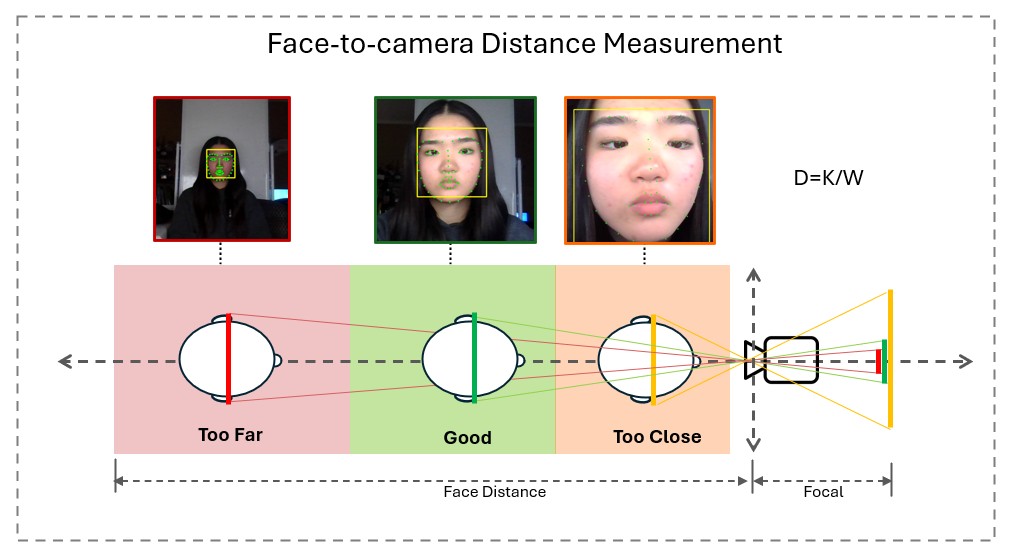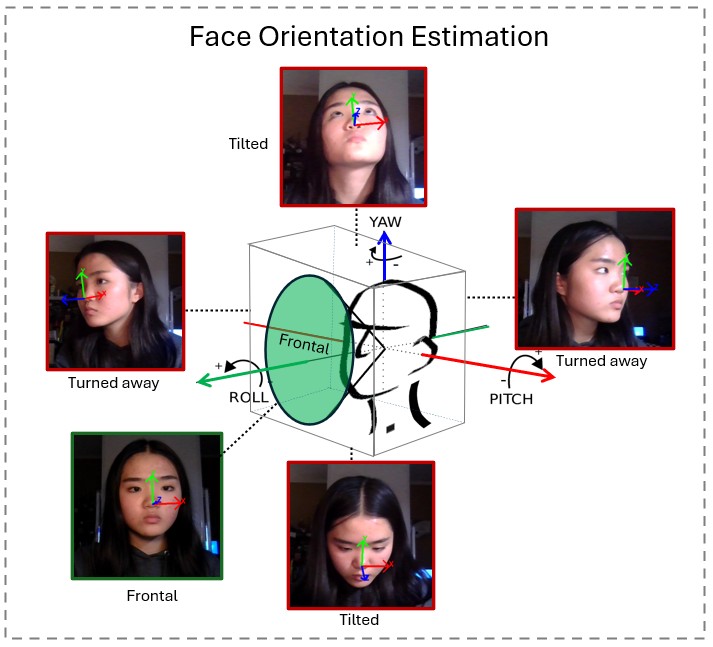The Dimensions of Tonguage
The Tonguage system leverages the unique mobility and functionality of the human tongue to create an innovative, intuitive human-machine interaction (HMI) methodology. By utilizing tongue positions, gestures, movements, and additional facial inputs, Tonguage enhances accessibility for individuals with severe physical disabilities, providing a flexible and user-friendly interface. The following outlines each key component of the system:
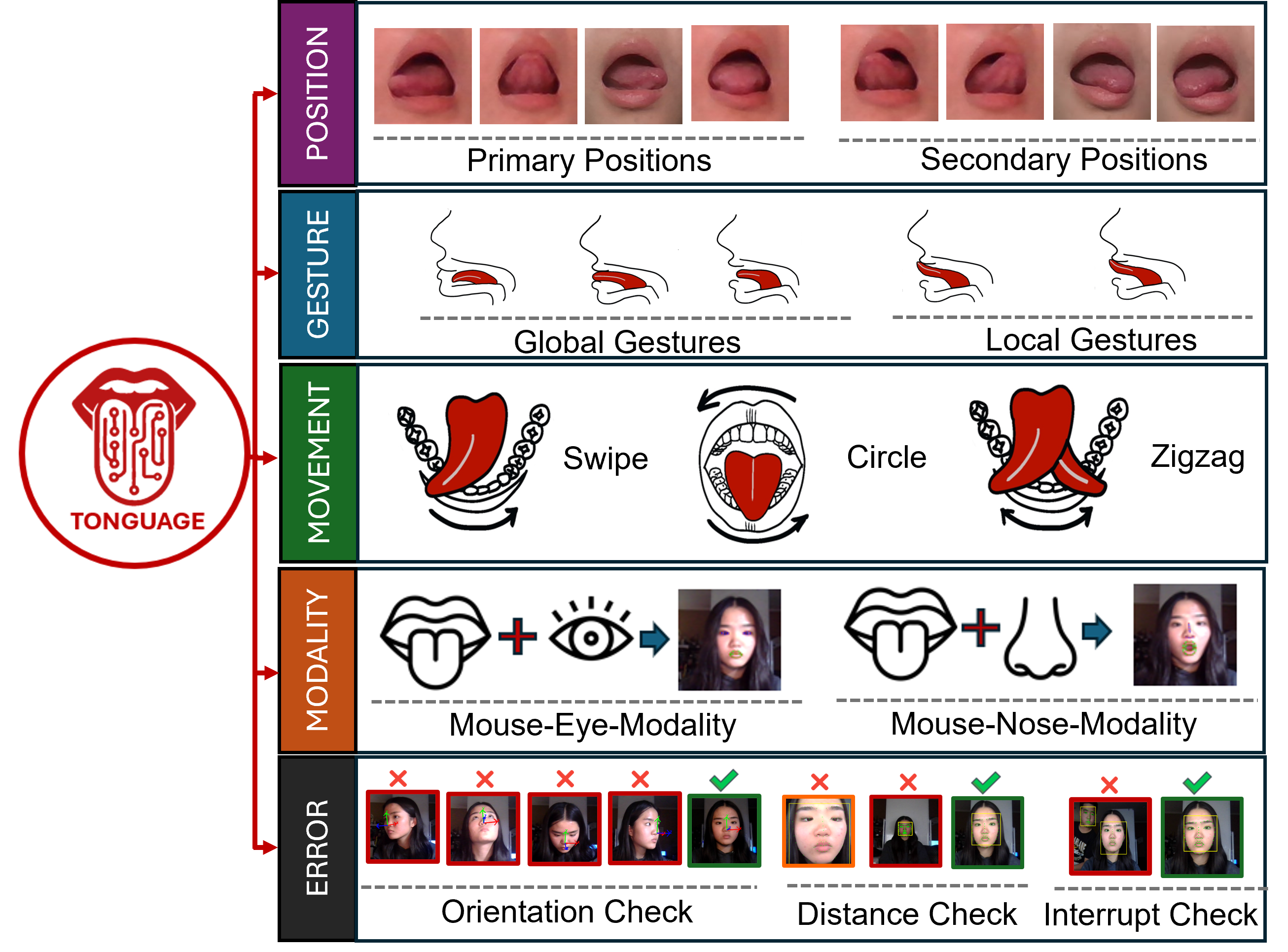
Spatial Positioning Definition
In Tonguage, tongue positions are categorized into eight distinct regions within the oral cavity, providing a spatial framework that allows for precise and reliable human-machine interaction. These regions are divided into two categories: primary and secondary positions. Each position is assigned a unique identifier to ensure the clarity and accuracy of the system’s operations. This structured spatial system is essential for interpreting tongue movements with high fidelity. By associating these positions with specific commands or functions, the Tonguage system provides a robust foundation for further gesture and movement analysis.
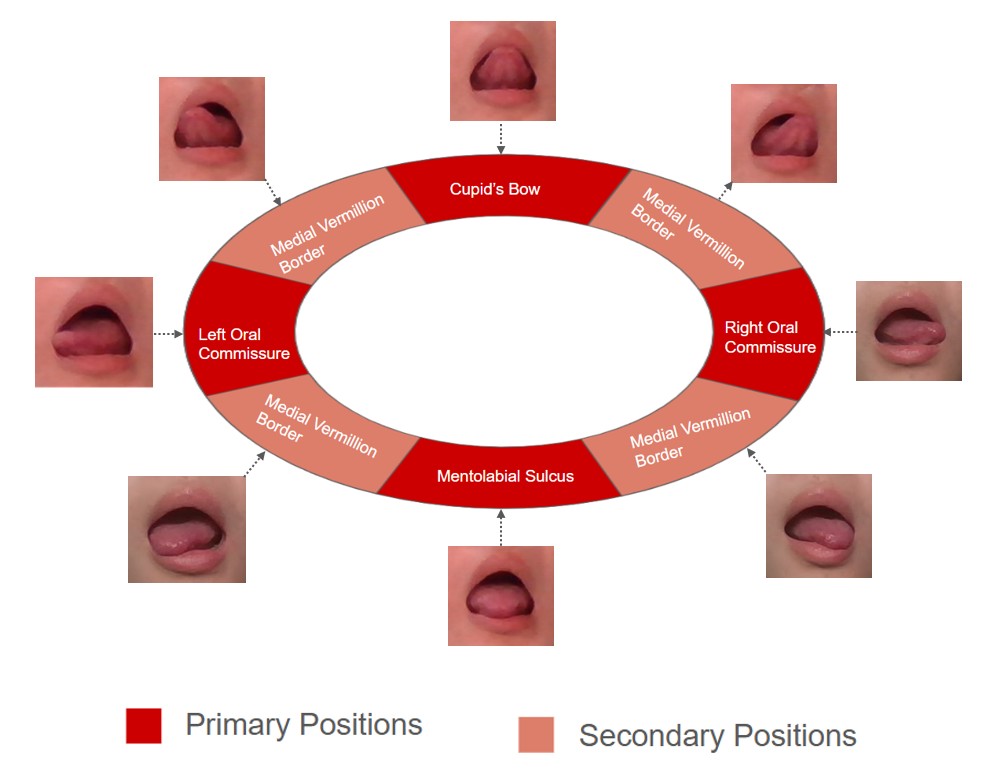

Interactive Gesture Definition
Gestures are the fundamental operational components of the Tonguage system, enabling communication between the user and the machine. The system defines gestures as the specific patterns of movement that the tongue performs to trigger particular responses. Gestures are categorized into two main types: global gestures and position-specific gestures. Global gestures are broad, system-wide actions, while position-specific gestures are confined to certain areas of the oral cavity and are associated with more localized commands.
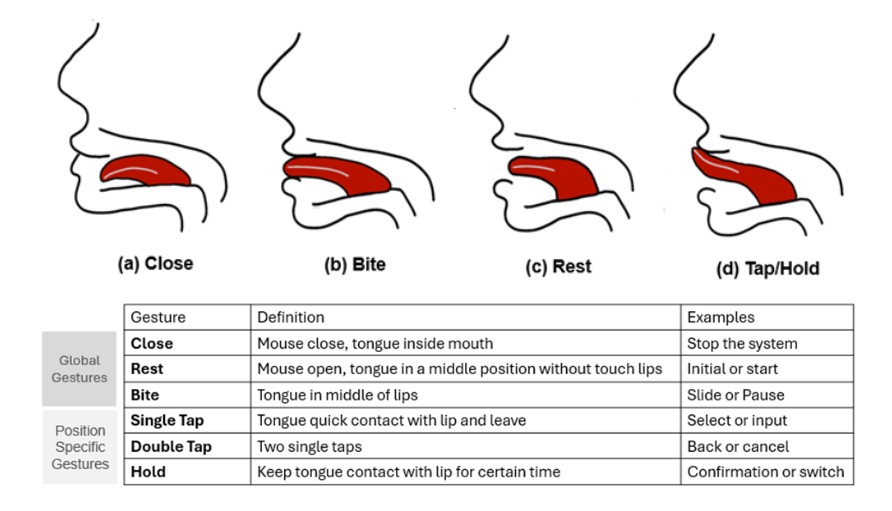
Dynamic Movement Definition
The Tonguage system incorporates dynamic movements, expanding the range of possible operations by translating patterned or directional tongue movements into commands. Movements, unlike gestures, are more fluid and customizable, allowing for complex interactions that enhance the system's adaptability to user needs. These movements can be mapped to specific applications, enabling tasks such as controlling a cursor, navigating menus, or even performing fine motor tasks like typing. The versatility of these movements supports various functionalities, making them an integral component of Tonguage’s efficiency and usability. For example, rapid tongue gestures could initiate a scrolling action, while a slow, deliberate movement might control the volume of an audio device.

Multimodal Interaction Definition
To enhance the system's versatility and usability, Tonguage integrates additional inputs from facial movements, expanding the range of possible commands and improving user experience. These multimodal enhancements combine tongue gestures with eye-tracking, or facial expressions, offering a more comprehensive and intuitive system. For instance, use left eye blink as the let mouse click and right eye blink as right mouse click.
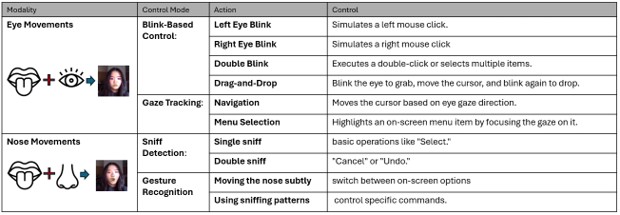
Error Prevention Mechanism
A critical challenge in developing HMI is minimizing errors during interaction. To ensure reliability and accuracy, Tonguage integrates several error prevention mechanisms that optimize tracking and reduce unintended inputs. These mechanisms include:
- Multiple Face Detection: This feature prevents interference from unintended faces, ensuring only the designated user’s facial data is processed.
- Focus Detection: This ensures the user's face remains in an optimal alignment and distance from the camera, using both Face Orientation and Distance Detection.
By incorporating these mechanisms, Tonguage improves input accuracy, system stability, and overall usability, ensuring a seamless and reliable user experience.
